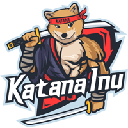 |
|
 |
|
 |
|
 |
|
 |
|
 |
|
 |
|
 |
|
 |
|
 |
|
 |
|
 |
|
 |
|
 |
|
 |
|

The cryptocurrency landscape offers a broad selection of tokens, each aiming to address different segments of the digital economy. Among the most talked-about niches is the metaverse, where virtual environments intersect with social interaction, gaming, and commerce. In this realm, investors have noticed tokens that provide specific services, such as in-game currency, virtual land transactions, and even casino-style gaming.
One token that has generated discussion is LuckHunter (LHUNT), presenting itself as a metaverse casino coin. Analysts have noted the possibility of large growth, with some suggesting it might see gains of up to 2000x in certain scenarios. This article explores the evolving metaverse sector, profiles LuckHunter’s features as a casino-focused project, and compares it with other well-established metaverse tokens. Keep in mind that none of this content is financial advice. Always carry out your own due diligence and consider the risks involved.
The Metaverse: A New Frontier for Investment
The metaverse covers online environments in which people can work, play, socialize, and trade digital assets. Its foundation is rooted in decentralized protocols, blockchain-based ownership, and the blending of traditional gaming with on-chain features.
Ownership and Economic Potential
Ownership within metaverse ecosystems typically relies on tokens, non-fungible tokens (NFTs), and other digital assets. Users purchase, trade, or stake these assets across marketplaces. As interest in virtual real estate, play-to-earn games, and social experiences grows, metaverse tokens may see rising demand.
Virtual Interaction and Diverse Use Cases
The metaverse expands beyond simple gaming:
Given the variety of use cases, metaverse assets have drawn the attention of early investors and established institutions alike.
Best Cryptocurrency To Buy Now - Top Metaverse Cryptos
Before diving deeper into each project’s details, it helps to identify the main coins featured in this discussion and why they deserve attention. This article looks at several tokens within the metaverse space, including:
By outlining how these tokens function and what they offer, readers can form a baseline understanding of the ecosystem’s scope. The following sections explore each project’s purpose, tokenomics, and potential roles within a diversified portfolio, all while acknowledging that market conditions and individual risk tolerance play significant parts in any investment decision.
1. LuckHunter (LHUNT): The Potential for 2000x Growth
LuckHunter (LHUNT) aims to stand out by integrating the thrill of casino gaming into an immersive virtual environment. This focus positions LHUNT as a metaverse casino coin that merges blockchain transparency with the excitement of online gambling.
Written by seasoned experts, who have over 16 years of experience in Free Zones development. Learn more.
Core Concept and Features
Click here to know more about LuckHunter Metaverse casino >>
Factors Behind the 2000x Growth Potential
Tokenomics and Distribution
Clear tokenomics are key to any project’s credibility, particularly in the gambling arena where trust is paramount. The LHUNT whitepaper, if publicly accessible, often covers details such as:
Team and Development Roadmap
The development team behind LHUNT appears to have backgrounds in blockchain engineering, online gaming, and digital marketing. Milestones may include:
If the team consistently meets roadmap objectives, it can build credibility among users and investors, which may, in turn, reflect in the token’s market performance.
Other Promising Metaverse Tokens
While LHUNT has gained notice for its metaverse casino vision, several other tokens remain important players in the sector. Each has a unique focus that appeals to different user preferences.
2. EarthMeta (EMT)
EarthMeta aims to replicate global regions in a connected virtual landscape. Users can purchase virtual equivalents of real-world locations, possibly hosting events or running digital businesses.
Key Features:
3. The Sandbox (SAND)
The Sandbox provides a voxel-styled world where users build and monetize games or interactive experiences. Its partnerships with well-known brands and personalities have broadened its user community.
Notable Elements:
4. Decentraland (MANA)
Overview: Decentraland is a long-standing metaverse where users buy virtual land (known as LAND) using MANA. Owners can build various structures and experiences, from art galleries to event venues.
Core Attributes:
5. Axie Infinity (AXS)
Axie Infinity popularized the play-to-earn model, especially during its peak, by allowing players to collect creatures (Axies) and earn rewards in daily gameplay.
Highlights:
Comparing Metaverse Projects
Each platform focuses on different segments of virtual environments. A quick comparison:
Ultimately, investors must match their own goals with a project’s vision and existing user base.
Investment Strategy and Portfolio Allocation
There is no universal strategy for allocating funds to metaverse tokens. However, a theoretical distribution might be:
Allocations should reflect your comfort level with risk, the timeline for returns, and your belief in each project’s utility. The above is merely an illustrative example.
Risks and Considerations
Metaverse
부인 성명:info@kdj.com
제공된 정보는 거래 조언이 아닙니다. kdj.com은 이 기사에 제공된 정보를 기반으로 이루어진 투자에 대해 어떠한 책임도 지지 않습니다. 암호화폐는 변동성이 매우 높으므로 철저한 조사 후 신중하게 투자하는 것이 좋습니다!
본 웹사이트에 사용된 내용이 귀하의 저작권을 침해한다고 판단되는 경우, 즉시 당사(info@kdj.com)로 연락주시면 즉시 삭제하도록 하겠습니다.






























































